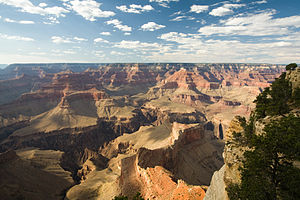When people picture Arizona, they see the desert, the Grand Canyon, and lots of cactus. What they don’t realize is that Arizona is much more than that; it is an important player in American agriculture. It may seem strange that the state most commonly associated with desert conditions and extraordinary heat has more than 26 million acres dedicated to farmland, but that is only one of the most interesting things about agriculture in Arizona.
About Arizona
- Arizona became the 48th state in 1912 and is home to more than 6.5 million people.
- Covering almost 114,000 square miles, it is the 6th largest state in the country.
- All of New England plus the entire state of Pennsylvania could fit inside Arizona.
- There are more than 15,000 farms and the average size of an Arizona farm is 1,670 acres.
The History of Arizona Agriculture
- Missionaries from Spain were some of the first Europeans to promote agriculture in the region.
- The arrival of the railroads in the late 1800’s opened up Arizona to new growth.
- The territory experienced a cattle boom from 1873 to 1891 and the number of cattle increased from less than 50,000 to more than 1.5 million.
- The drought that lasted from 1891 to 1893 saw the cattle industry lose half this expanded herd.
- Arizona was pre-dominantly a rural area focused on mining and the production of cattle, cotton, and citrus until after World War II when its climate and appeal to retirees helped spur significant growth.
- The rapid increase in population over the following 50 years would decrease the size of the citrus and cotton industries as land was diverted to housing and the cost of water made these core crops less profitable.
- Despite these challenges, the Arizona agriculture industry remains a critical part of the state’s economy, one that is continuing to thrive even in difficult times.
Climate
- While the state is most often associated with the desert conditions seen in the southern counties, as the northern half of the state makes up the western most part of the Rocky Mountain range, it has mountainous terrain.
- Despite the differences in topography, the range of temperatures experienced throughout the state are very similar, with the south ranging from 30°F-100°F+ and the north ranging from 20°F-95°F.
- The majority of the state’s rainfall occurs during monsoon season which happens in the latter half of the summer.
Crops
- With irrigation, many crops can be grown year round in the southern part of the state.
- Because of the critical need to move water from places where it is plentiful to places where it is scarce, Arizona has one of the most efficient irrigation systems on the planet.
- Arizona’s top crops are lettuce, cotton, and hay.
- Lettuce is a key crop all year round, but especially in winter when Yuma is the lettuce capital of the world.
- Each year, Arizona farms produce enough cotton to make enough pairs of jeans for every person in the country.
- Other top crops are vegetables like spinach, broccoli, and cauliflower, citrus like lemons, and melons like cantaloupe and honeydew.
Livestock
- Dairy products and cattle are among the state’s most valuable farm products.
- In Arizona, there are more than 800,000 head of beef cattle and dairy cows.
- The dairy cows in the state produce more than 4 billion pounds of milk each year which is more than 23,000 pounds for each cow.
- Arizona’s only commercial egg farm, Hickman’s Family Farms, owns more than 5 million hens that provide in excess of 3 million shell eggs per day.
- Arizona also boasts hog and sheep populations that exceed 150,000 each.
Related articles
- A Picture of Arizona Agriculture (fillyourplate.org)
- Our Celebrating the Centennial Series, Part 2 (fillyourplate.org)
- Get Down with Dairy this Month (fillyourplate.org)


